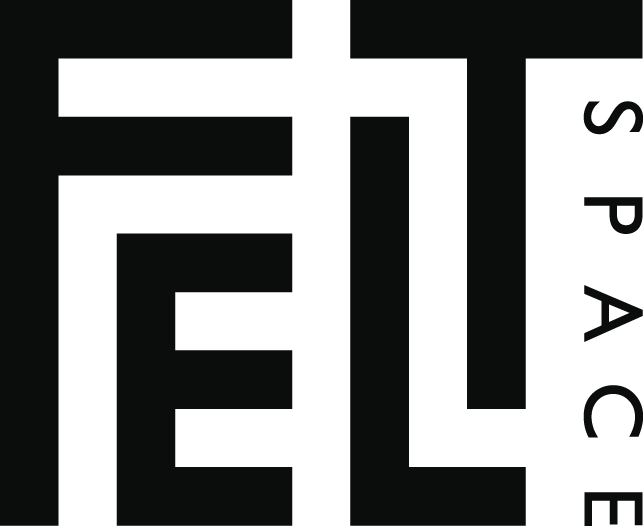genuine & authentic – March 2018
ARTISTS: Derek sargent
AUTHOR – CHRistopher houghton
Derek Sargent’s Genuine and Authentic exhibition at FELTspace is a wryly constructed and multiplicious installation. The show comprises of four highly reflective, red cuboids suspended from the ceiling, each with fixed, open zippers on four sides that invite and comment on prospective acts of voyeurship. Hanging on the walls are four sheets of perspex invisibly hung, each presenting text subtly drilled through its surface (pervert, overlook, deviant and screen). The text is so finely presented, it subverts any attempt at a casual encounter. One has to pay attention.
Genuine and Authentic is a generative, disarming construct and Sargent’s penchant to address notions of in/authenticity and contradiction between queer and non-queer culture are strongly on show. Entering the gallery it is hard to escape the intensely reflective surface of the works on display. Due to their arrangement, the audience become implicitly and explicitly part of the work. As one walks amongst the installation, the mirrored surfaces re-present multiple versions of the viewer from almost any point in the room. It is almost impossible to find a neutral corner (no matter how hard I tried); one move and multiple versions of yourself move with or against you around the room.
In facing off with ourselves, Sargent’s work presents a tension between viewership and authorship. It is a tight balance of passive and active spectatorship where reality and temporality are expressly present and readily interchangeable. The audience becomes a function of implied multiplicity entwined within the works. The question in Sargent’s installation is to what end are we creating, avoiding, participating — when we, the participant spectator, are overtly implicated and explicated as part of the exchange.
The works amplify Sargent’s focus on queer histories and his subversion of the heteronormative construction of such. His use of colour, both an organic and political gesture, and his proposition of the zipper, suggesting sexual liberation and/or deviancy (depending on your point of view and experience) proffer an oscillation within such relationships. That the zips are fixed open suggests an empowered position, a provocation of sorts that invites, titillates, reveals and welcomes those brave enough to see beyond the apparent and implied.
The measure of the artist however is not the gesticulation of the obvious but the implication of the work’s more subtle and lasting effects. By situating the audience as a performative collaborator within the installation, Sargent’s works elicit a conversation about the degree to which the viewer, and thus society and culture facilitate their own narrative. In presenting and contemplating the relationship, the debate the works stimulate is a simultaneously public and private exchange. In acknowledging one’s contribution, the proposition is one of personal accountability, and a consideration of how we adjudicate and form perspective around identity and queerness. Intelligently and allegorically, Sargent is asking the audience to account for their duplicity in the multiplicity of meanings that inform, constrict, control and rationalise communal perspective and engagement on queer identity, and the facilitation of calamity in a societal/cultural context. I use the world calamity reflecting on the recent gay marriage vote and how appallingly it was handled by our current Federal government. This is not something to ponder too much, for the works succeed on their own. It is enough to observe the exhibition as a timely and synchronous commentary on how social politics are enacted.
Acknowledging the gravitas of the subject and our individual contribution to the cultural malady we find ourselves in, the remedy (and dare I say joy) in engaging with Sargent’s installation is a reinforcement of the fact there is no singular perspective or commentary that articulates the social or political mores in which we are entangled. Sargent’s invitation to engage is more reflective (excuse the pun), and the degree to which one takes it up, as an inquiry or conversation, is ultimately a question of personal accountability and a measure of the relationship we have with ourselves.
The provocation, both playful and deeply affecting, in Sargent’s installation is the acknowledgement of how intimately we construct identity and thus the world around us; culturally, politically, personally. It is also an acknowledgement that none are mutually exclusive. In extending the invitation to examine our contribution to such cultural mores, Sargent’s work isn’t accusing or confronting. Rather, it is calmly disarming and re-constructive, and by virtue invites genuine and (dare I suggest) authentic, engagement. An approach through which we can all take heart.
__
Christopher Houghton is a multi-award winning filmmaker and artist. He has directed two feature films (DAWN, SONS & MOTHERS) and authored three feature length screenplays (DAWN, SONS and MOTHERS, BIRD). His work in documentary and drama has received over a dozen awards, many from Australia's most prestigious institutions including the Australian Academy of Film and Television and the Australian Directors’ Guild. His work has screened at leading film festivals within Australia and around the world. As an artist, Christopher has staged six solo exhibitions and collaborated in over a dozen group shows. Represented in private and corporate collections around Australia and the UK, Christopher engages a self-prescribed practice of slow photography to co-author work within situated environments that embody the specificity of country in a discreetly Australian context.
